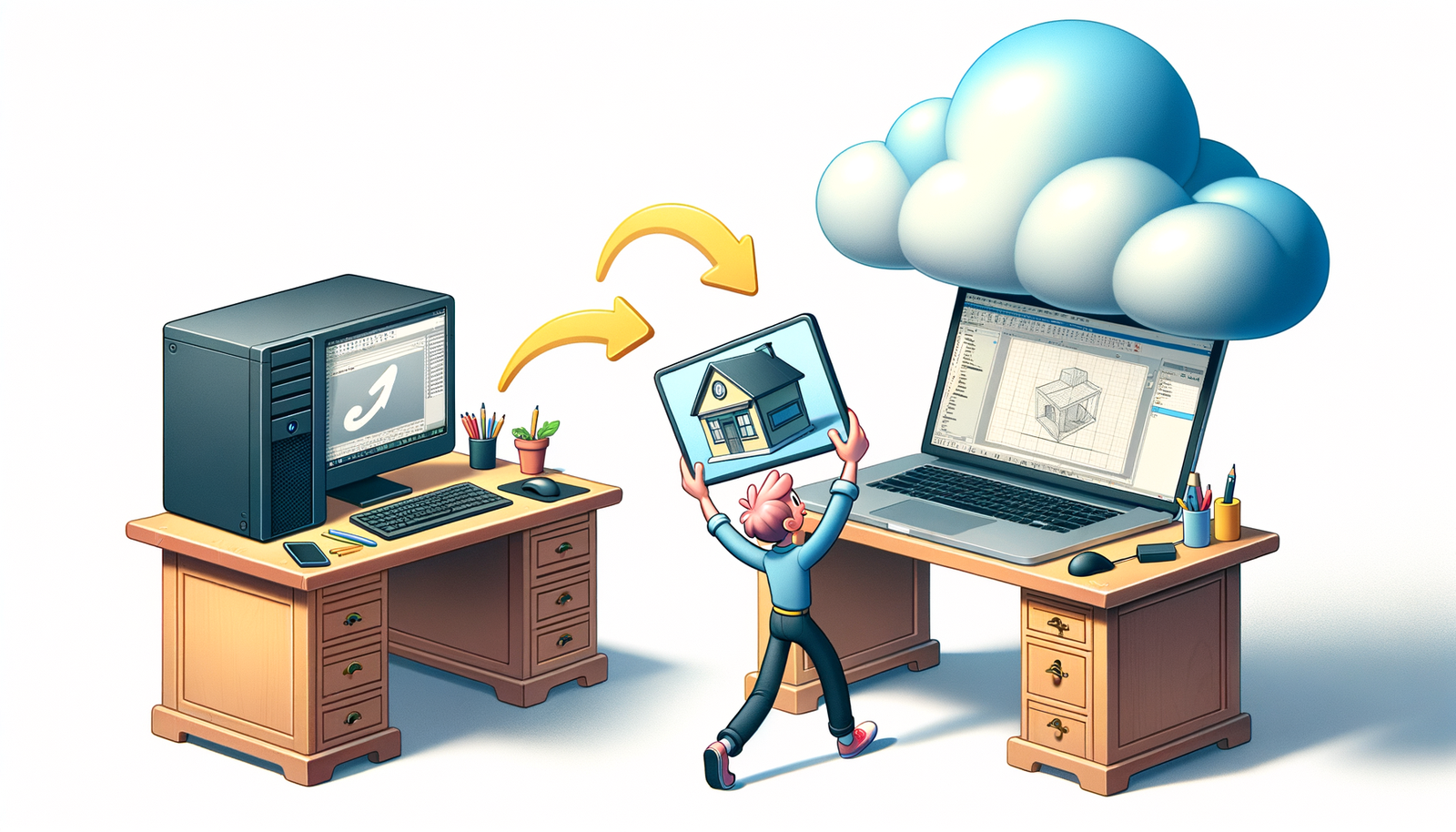Your Cart is Empty
Customer Testimonials
-
"Great customer service. The folks at Novedge were super helpful in navigating a somewhat complicated order including software upgrades and serial numbers in various stages of inactivity. They were friendly and helpful throughout the process.."
Ruben Ruckmark
"Quick & very helpful. We have been using Novedge for years and are very happy with their quick service when we need to make a purchase and excellent support resolving any issues."
Will Woodson
"Scott is the best. He reminds me about subscriptions dates, guides me in the correct direction for updates. He always responds promptly to me. He is literally the reason I continue to work with Novedge and will do so in the future."
Edward Mchugh
"Calvin Lok is “the man”. After my purchase of Sketchup 2021, he called me and provided step-by-step instructions to ease me through difficulties I was having with the setup of my new software."
Mike Borzage
Navigating the Shift: The Transition from Desktop to Cloud-Based CAD Solutions
July 22, 2024 3 min read


Introduction to CAD Evolution
The journey of Computer-Aided Design (CAD) is a testament to technological evolution, starting from basic 2D drafting systems on large, expensive computers to sophisticated desktop applications. Key technological advancements, such as the development of graphical user interfaces (GUI), the increase in computing power, and the advent of affordable personal computers, have catalyzed the evolution of CAD software. This progression paved the way for CAD to become an indispensable tool in engineering, architecture, and design. The introduction of web-based functionalities marked the beginning of a transition phase, shifting from solely desktop-based applications towards more versatile cloud-based solutions.
Advantages of Cloud-Based CAD Solutions
Accessibility and Collaboration
One of the most noteworthy benefits of cloud-based CAD solutions is their ability to enhance accessibility and collaboration. Engineers and designers can access their projects from anywhere, at any time, fostering real-time collaboration across different geographies. This significantly reduces project timelines and improves overall productivity.
Scalability and Flexibility
Cloud-based CAD services offer unparalleled scalability and flexibility, accommodating varying project sizes and computational demands effortlessly. This adaptability is highlighted through a comparison of performance metrics, demonstrating the superior capability of cloud solutions in managing extensive, resource-intensive tasks.
Cost Efficiency and Subscription Models
The shift towards cloud-based solutions also introduces cost efficiency through subscription-based pricing models, a stark contrast to the hefty upfront costs associated with traditional perpetual licenses. This change significantly lowers the barrier to entry for small businesses while providing large enterprises with a more predictable expenditure model.
Technical Challenges and Solutions
Data Security and Privacy
Concerns around data security and privacy are paramount when it comes to storing sensitive design data in the cloud. Implementing robust encryption methods, stringent access controls, and adhering to compliance standards are critical measures to mitigate these concerns.
Performance and Connectivity
Although cloud-based CAD solutions offer numerous benefits, they also bring challenges related to internet dependency. Issues such as latency and graphics rendering require innovative technological solutions to ensure that the performance of cloud-based systems matches or exceeds that of desktop applications.
Interoperability and Integration
Ensuring interoperability and seamless integration among different CAD tools and other software within cloud environments is essential for optimizing workflow efficiency. The development of standards and ongoing efforts to enhance software compatibility are crucial for the future of cloud-based CAD platforms.
The Future of CAD: Emerging Trends and Predictions
The future of CAD is marked by the integration of cutting-edge technologies such as AI and Machine Learning, which promise to revolutionize design processes by automating routine tasks and enabling more sophisticated predictive analysis. Meanwhile, Augmented Reality (AR) and Virtual Reality (VR) are set to transform CAD visualization and interaction, providing immersive experiences that were previously unimaginable.
The proliferation of cloud-based CAD platforms is fostering a growing ecosystem of add-ons and APIs, offering a diverse range of specialized tools that cater to niche requirements. This expansion is not only enhancing the functionality of CAD applications but also encouraging innovation across the industry.
In conclusion, the continuous evolution of CAD technologies is having a profound impact on engineering, architecture, and product design. As these tools become more advanced and accessible, they are set to redefine the limits of design and manufacturing, ushering in a new era of creativity and efficiency.
Also in Design News

Cinema 4D Tip: Matrix-Driven Instancing for High-Performance Scattering
December 20, 2025 2 min read
Read More
V-Ray Tip: V-Ray Anisotropy Techniques for Brushed Metals and Hair
December 20, 2025 2 min read
Read More
Revit Tip: Revit Nested Tagging: Shared Nested Families and Roll-Up Parameters
December 20, 2025 2 min read
Read MoreSubscribe
Sign up to get the latest on sales, new releases and more …


